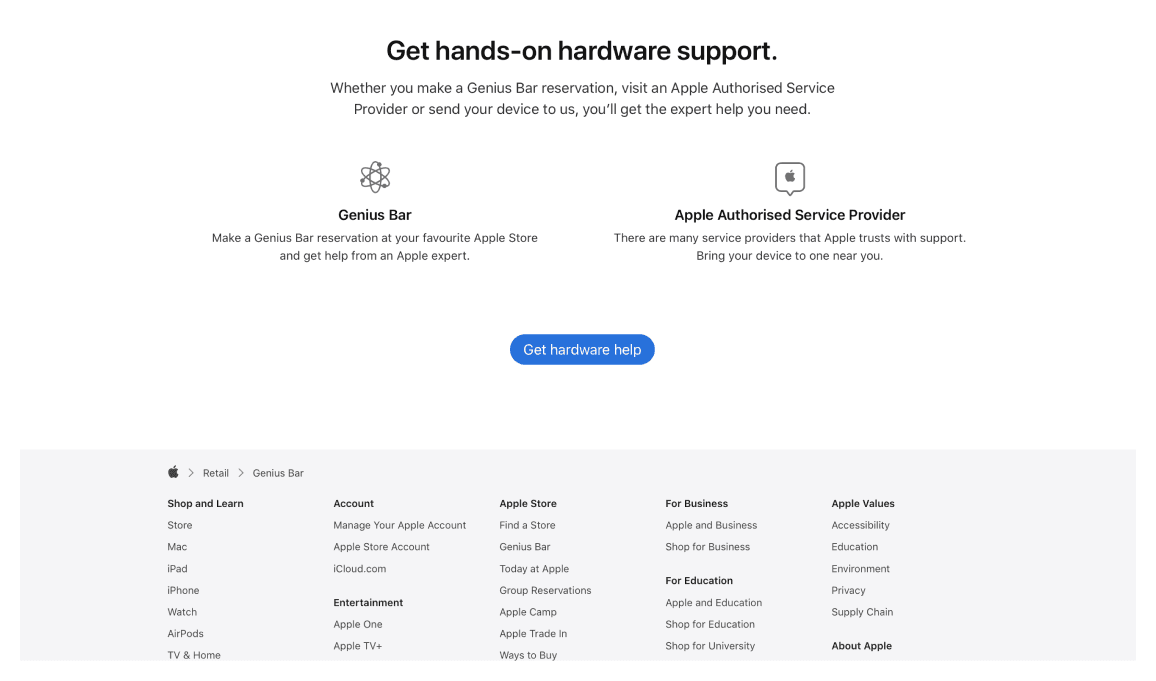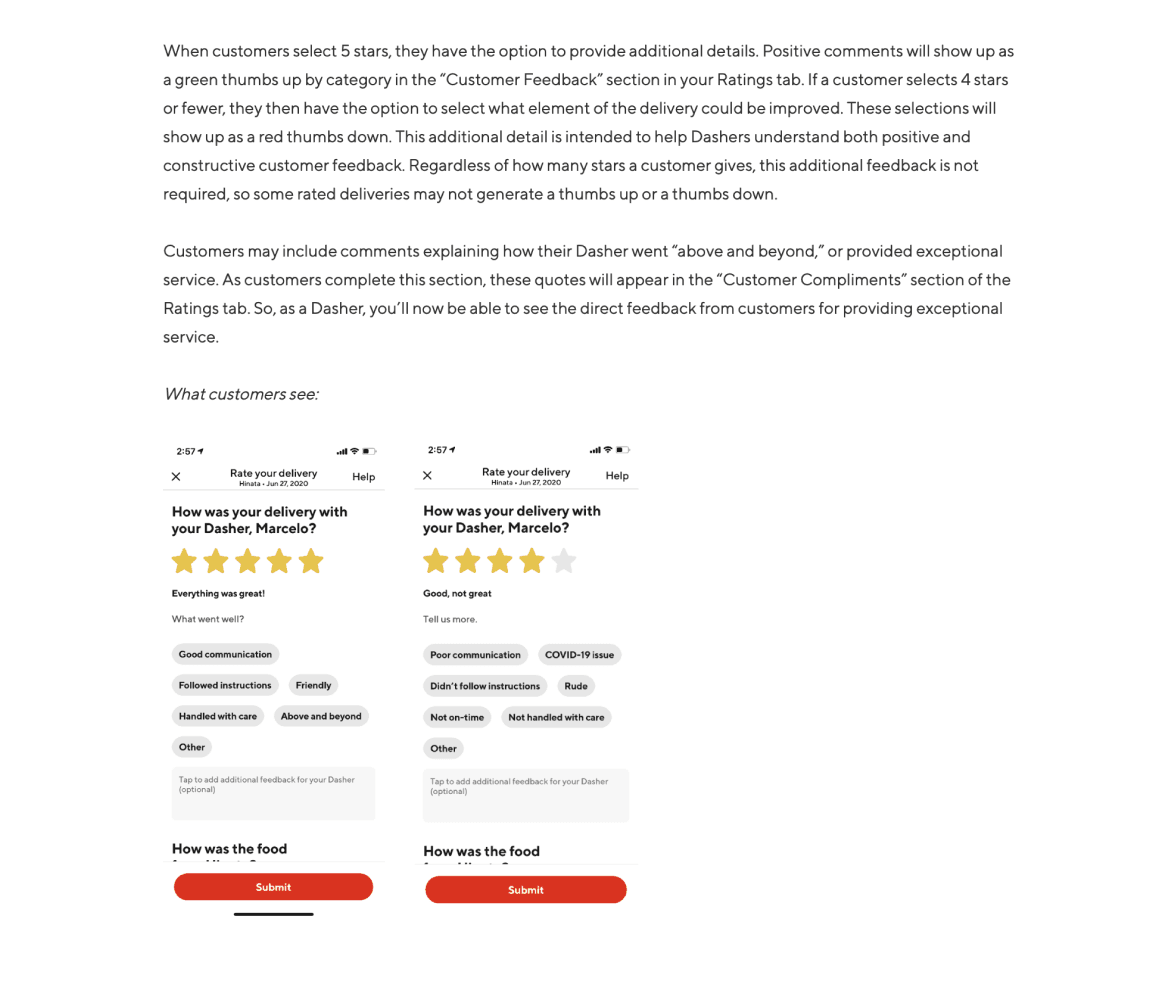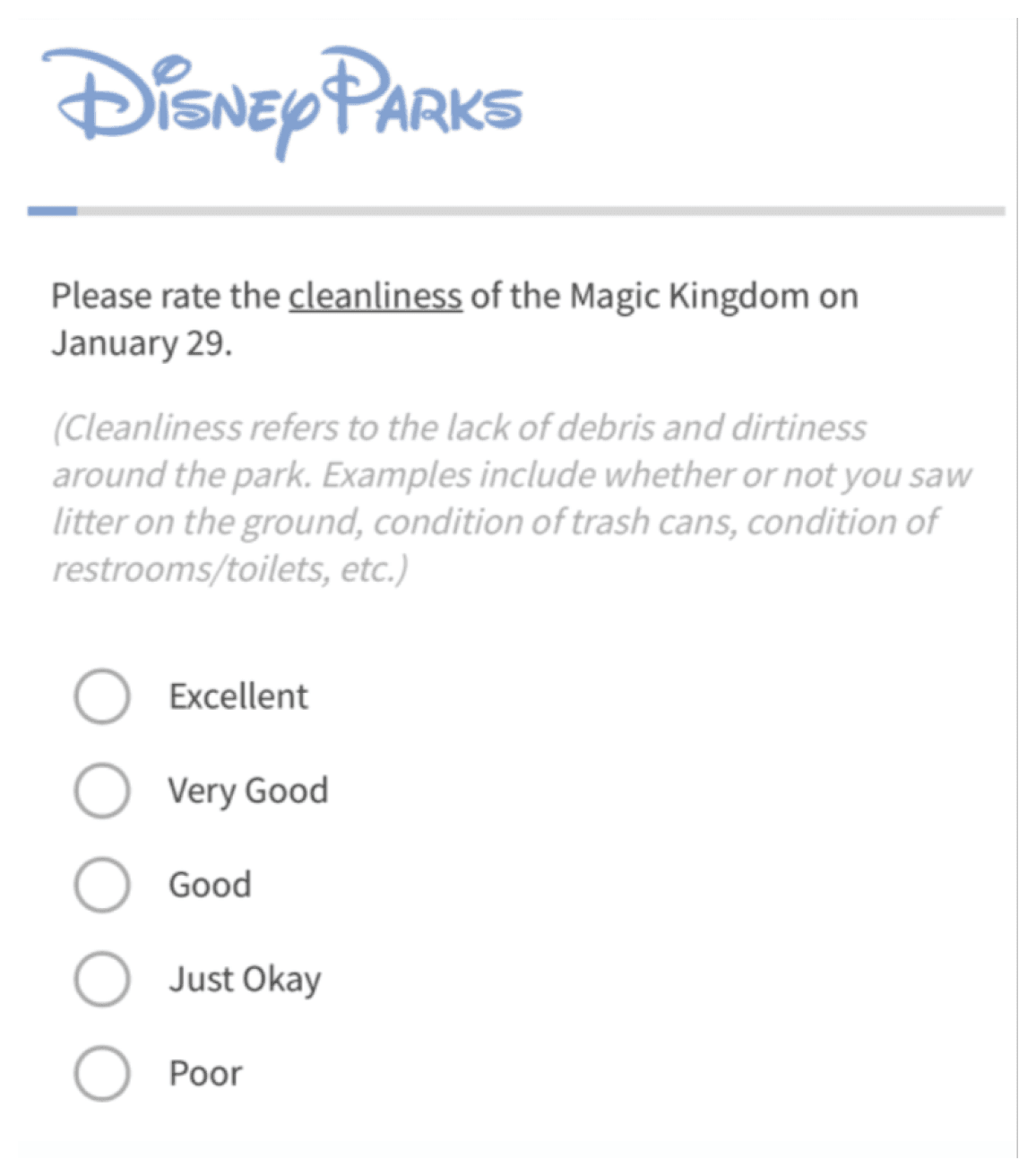What is voice of the customer (VoC) ?
Voice of the customer is the process of gathering, analyzing and understanding your customer's feedback, their experiences, preferences and expectations from your products or services. It involves collecting data from multiple channels to do so.
The VoC gives businesses valuable insights into how satisfied or unsatisfied the customers are, if their needs are met or not, and what needs to improve. When businesses understand what their customers are saying, they can make smart choices to improve products, fine-tune services, and boost the overall customer experience.
Types of VoC data
Understanding the different types of Voice of the Customer (VoC) data is essential for strategizing methods to collect meaningful insights. VoC data can be categorized into three primary types:

1. Direct feedback
Direct feedback is actively provided by customers through direct methods where they willingly share their opinions with the brand. This data is typically gathered through surveys, reviews, or direct comments or emails. It's often the most straightforward form of VoC data, as it directly reflects customer sentiment.
2. Indirect feedback
Indirect feedback is more passive and often happens in the background without the customer explicitly providing it to the brand. This type of feedback is gathered from sources like social media, website interactions, and customer support interactions. Though not directly solicited, it still provides powerful insights into customer sentiment and experiences.
3. Inferred data
Inferred data is collected from customers' actions or behaviors rather than their direct statements. Examples of inferred data include purchase history and website behavior. Brands can actively analyze customer actions to understand if their customer had a good or bad experience. For instance, if customers visit your website frequently or spend a lot of time on your app, it’s usually a good sign.
Importance of voice of customer strategy for brands
Collecting and incorporating VoC data into marketing strategies offers several substantial benefits. Here are a few of them:
1. Enhanced customer satisfaction
VoC feedback provides valuable insights for improving every stage of the customer journey, resulting in a better overall experience. By analyzing customer feedback, businesses can identify areas where customers are having a poor experience and make specific improvements. It also helps businesses understand customer preferences and expectations, enabling them to personalize interactions and exceed expectations.
2. Improved product development
Feedback from customers helps identify which new features are most urgently desired and which aspects of the product need improvement. This insight allows businesses to prioritize features for development, ensuring that product updates align with user needs. For example, companies can identify common requests or frustrations and integrate those insights into their product roadmap. This process not only creates more user-friendly products but also positions the brand as responsive and customer-centric, which is crucial in competitive markets.
3. Increased customer retention
Addressing feedback and resolving customer concerns through VoC initiatives show customers that their opinions matter. When companies take proactive steps to improve based on feedback, they are more likely to retain their customers, reduce churn, and encourage repeat business. Engaged customers who feel valued are also more inclined to stay loyal, strengthening long-term brand relationships.
4. Data-driven marketing
VoC enables decisions backed by real customer insights, creating marketing strategies driven by genuine customer preferences. This data-driven approach helps marketers focus on what resonates most with their audience, from messaging and content to channel choice and timing. As a result, marketing campaigns become more effective, efficient, and relevant, leading to better engagement rates and higher conversions and ROI.
Methods for collecting voice of the customer data
Gathering VoC data is essential to building an effective VoC strategy. Here are some popular methods you can use to collect relevant data:

1. Customer surveys and questionnaires
Customer surveys and questionnaires are a common way of gathering direct customer data. By utilizing structured feedback mechanisms, businesses can ask the right questions directly to their customers and get concrete feedback on anything at all.
You can use a tool like Mailmodo to simplify this process by embedding interactive surveys and forms directly within emails, boosting response rates and making it easier for customers to fill up and submit their responses without leaving their inbox.
Social media listening provides you with indirect VoC data. Monitoring social media platforms for brand mentions, hashtags, and reviews can reveal how customers feel about products and services in real-time. It allows you to analyze customer sentiments, preferences, and behaviors across various social media platforms.
3. Customer interviews and focus groups
Customer interviews and focus groups provide valuable qualitative insights that quantitative data may miss. By engaging directly with customers, companies gain feedback on experiences, expectations, and improvement suggestions. Interviews allow for in-depth discussions, while focus groups capture diverse perspectives.
4. Feedback from customer support representatives
Customer support representatives are the direct touchpoints with the customers. They can provide insights into specific pain points and needs of the customers, allowing businesses to tailor their offerings to enhance customer satisfaction. By analyzing customer conversations, businesses can uncover trends, sentiments, and areas for improvement.
5. Live chat and in-person surveys
Live chat allows businesses to respond instantly to customer inquiries and capture sentiments in real-time using AI chatbots. In-person surveys provide valuable, detailed insights into customer perceptions and preferences, offering a deeper understanding of their needs.
6. Emails and recorded call data
Analyzing emails helps identify customer sentiments, preferences, and issues, while sentiment analysis uncovers patterns in feedback. Recorded call data provides context to customer emotions and satisfaction, allowing businesses to assess service quality. Using NLP techniques on both email and call data enables organizations to extract actionable feedback from these sources.
7. Website behaviour analysis
Businesses can identify areas for improvement or pain points by using tools like heatmaps or session recording software to analyze how users interact with their websites.
8. Product usage data
Information about how users interact with features can give software and tech companies insight into user preferences and problem areas.
Sample questions to ask in your VoC surveys
Creating an effective Voice of the Customer (VoC) survey involves asking the right questions that fetch you actionable insights into customer experiences, expectations, and potential areas for improvement. Here are some sample questions to include in your VoC surveys:
Customer satisfaction and experience
How satisfied are you with our product/service?
What do you like the most about our product/service?
Which areas of our service/product would you like to see improved?
Product/service quality and value
How well does our product/service meet your needs?
Do you find our product/service to be a good value for the price?
Are there any features you wish our product/service had?
Customer service and support
How would you rate your experience with our customer support team?
Was your issue resolved in a timely manner?
What could our support team do to improve your experience?
Brand perception and loyalty
How likely are you to recommend our product/service to others?
What three words would you use to describe our brand?
What is the primary reason for continuing to use our product/service?
💡 Related guide: 16 Testimonial Questions to Ask Your Customers
Steps to implementing a VoC program
By following key steps and utilizing the right tools, businesses can develop a robust VoC program that delivers valuable and actionable feedback.
Step 1: Identify your VoC objectives
Establishing clear VoC objectives is essential for creating a focused and effective program. These objectives should align with your overall business goals, such as improving customer satisfaction, enhancing product development, or increasing retention. For instance, if customer satisfaction is a priority, your VoC objective might be to identify and address common pain points.
Step 2: Map customer journeys to identify touchpoints
Mapping the customer journey reveals key touchpoints—moments when customers interact with your brand, such as visiting your website, making a purchase, contacting support, or engaging on social media. Each touchpoint provides an opportunity to collect valuable VoC data. By strategically placing feedback tools like surveys and forms at these stages, businesses can gather insights throughout the customer lifecycle, enabling a comprehensive understanding of the customer experience.
Selecting the right VoC tools is crucial for efficiently collecting, analyzing, and acting on customer feedback. There is a wide range of tools available, each with its own set of strengths and weaknesses, making it essential to choose tools that align with your specific needs and objectives.
| Tool type |
Description |
| Survey platforms |
Enable the creation and distribution of online surveys to gather structured customer feedback. |
| Sentiment analysis tools |
Utilize text analytics and natural language processing to analyze customer sentiment from text data. |
| Social media monitoring tools |
Track brand mentions and sentiment on social media platforms. |
| Customer relationship management (CRM) systems |
Store and manage customer data, including VoC feedback, for a holistic view of the customer. |
| Email feedback tools |
Use email to request feedback, follow up on service experiences, or send surveys, providing a direct line of communication. |
When selecting VoC tools, consider factors such as ease of use, integration capabilities, reporting features, and scalability. It's also essential to ensure that the chosen tools align with your budget and technical expertise.
Examples of voice of the customer campaign by real businesses
Here are a few businesses that showcase and use the power of VoC to shape strategies and enhance overall customer satisfaction.
1. Apple
Apple leverages direct customer feedback from its ‘Genius Bar’ in stores, where customers interact with experts for technical help. These face-to-face interactions offer Apple real-time insights into product performance, usability issues, and customer concerns. Additionally, Apple uses social listening to gather indirect feedback from social media, forums, and review sites, allowing them to track public sentiment and address potential issues early.

2. DoorDash
DoorDash gathers customer feedback through direct channels like post-delivery surveys and reviews on its app, enabling the company to quickly address specific service issues, such as delivery speed or order accuracy. DoorDash also uses sentiment analysis on social media and review platforms to gauge indirect customer sentiment, allowing them to identify trends and refine their offerings. By actively responding to customer input and refining its services, DoorDash enhances both user satisfaction and loyalty.

3. Tesla
Tesla uses social media listening and direct feedback channels to gather customer insights, which directly inform product development. By monitoring customer comments on social platforms, Tesla gains real-time insight into common issues and emerging preferences, allowing the brand to make agile adjustments to both hardware and software. Additionally, Tesla’s in-car feedback system enables drivers to provide direct feedback, which is immediately analyzed and often results in software updates for an improved user experience.
4. Disney
Disney’s dedication to the Voice of the Customer (VoC) is evident in its continuous enhancement of the customer experience across theme parks, movies, and merchandise. By utilizing customer surveys at theme parks and conducting in-depth sentiment analysis of social media feedback, Disney gains real-time insights into guest expectations and experiences. For example, post-visit surveys and feedback kiosks at Disney parks allow the company to pinpoint areas for improvement, like ride experiences, dining options, and customer service.
Disney also leverages behavioral data from their My Disney Experience app, analyzing customer journeys to improve everything from wait times to personalized offerings. This customer-focused approach ensures that Disney not only meets but often exceeds guest expectations, creating memorable experiences that foster loyalty and set Disney apart as a leader in VoC-driven customer engagement.

Conclusion
Mastering the Voice of the Customer (VoC) is essential for any business aiming to elevate its customer experience and gain a competitive edge. By effectively gathering, analyzing, and implementing VoC insights, companies can transform customer feedback into actionable strategies that enhance satisfaction and drive real business results.
A successful VoC program requires clear objectives, well-chosen tools, consistent data collection, and a focus on translating insights into tangible improvements. Use the information given in the article to create your own VoC approach that strengthens customer relationships and fuels long-term success.















